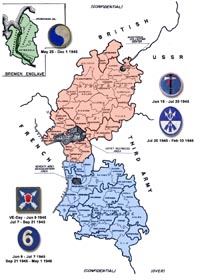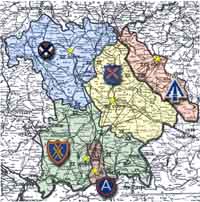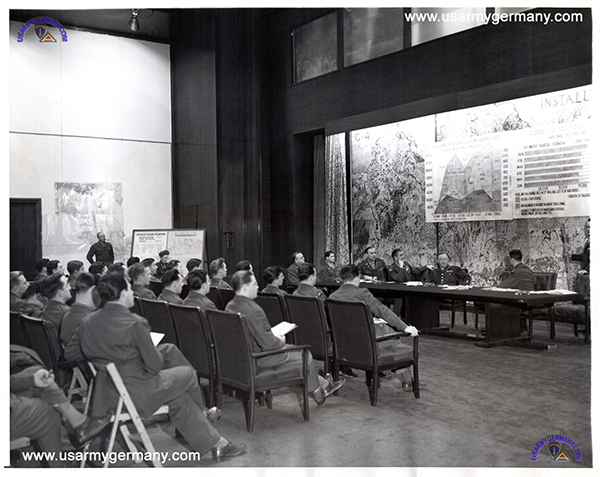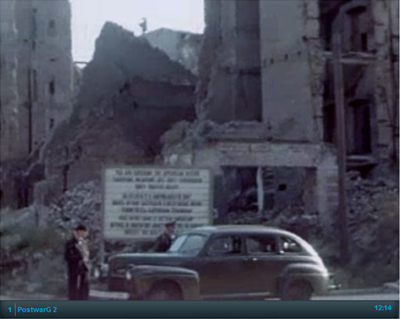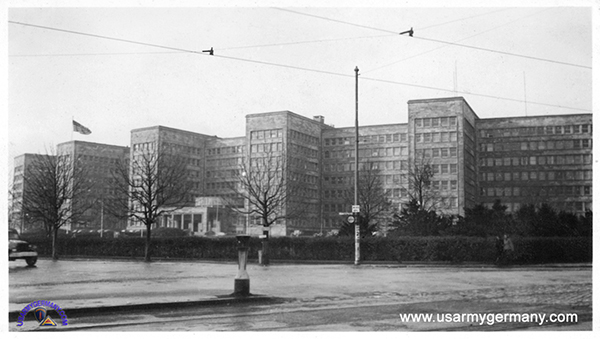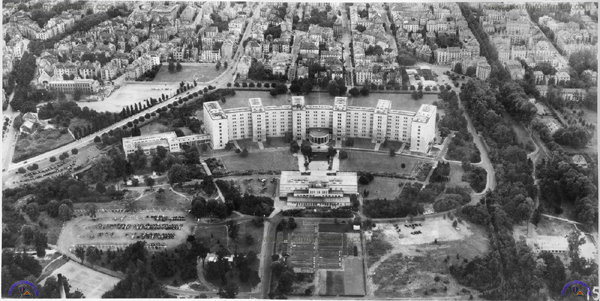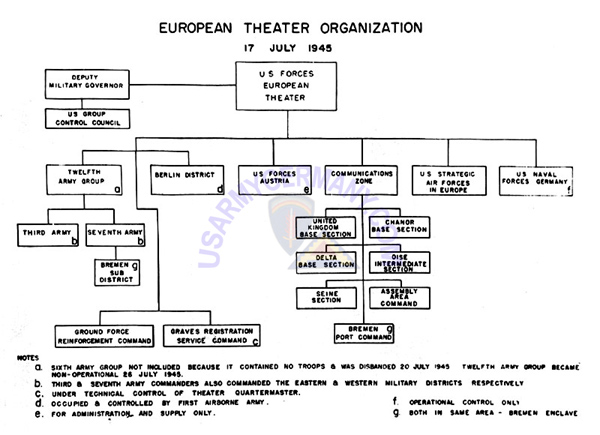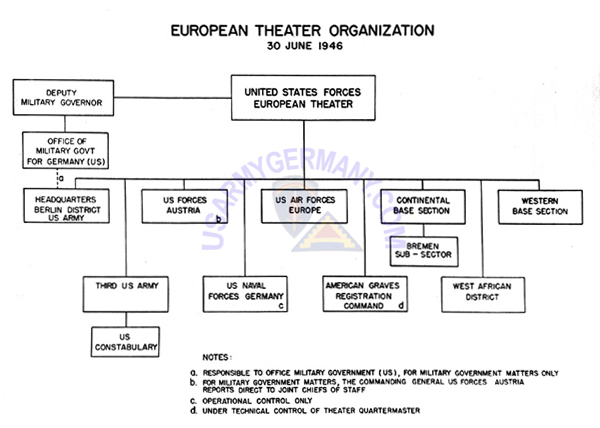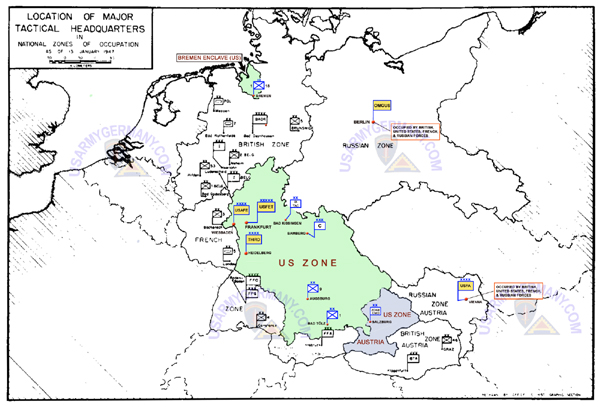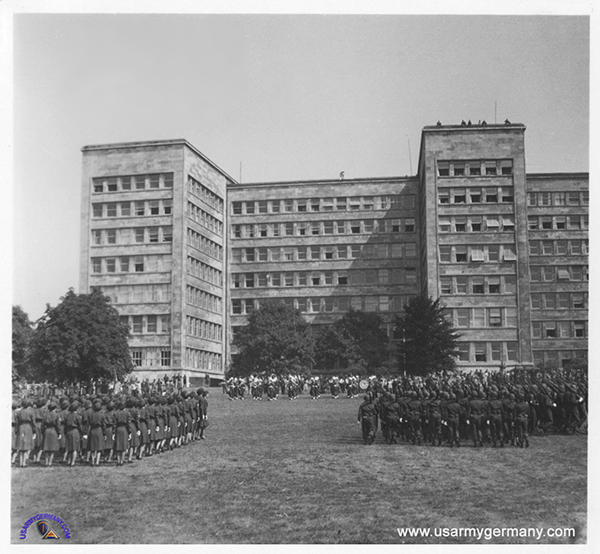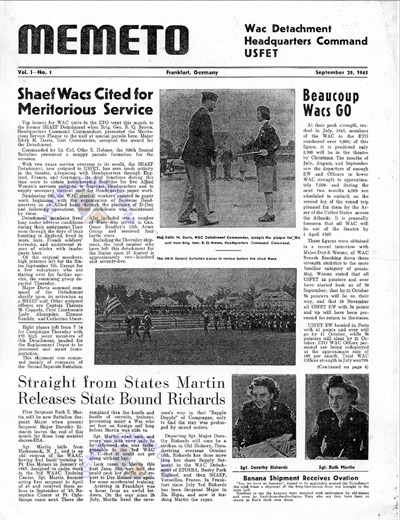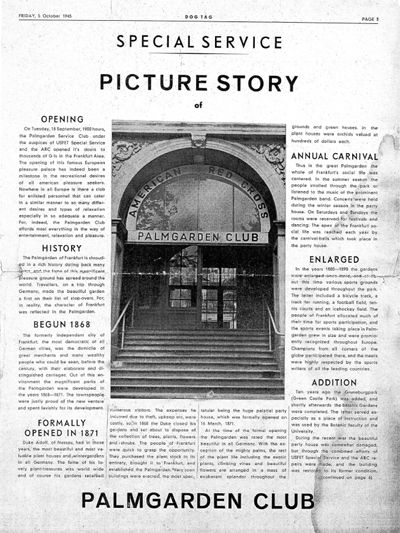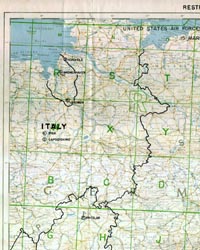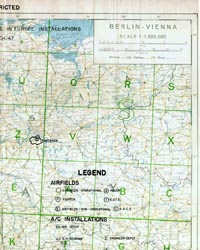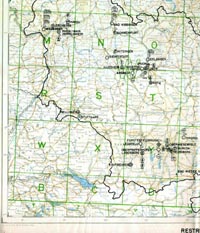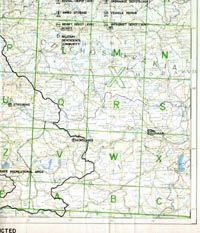| If you do
NOT see the Table of Contents frame to the left of this page, then
Click here to open 'USArmyGermany' frameset |
||||
United States Forces European Theater |
||||
|
|
||||
|
||||
|
|
||||
| Army of Occupation | ||||
| 1945 - 1947 | ||||
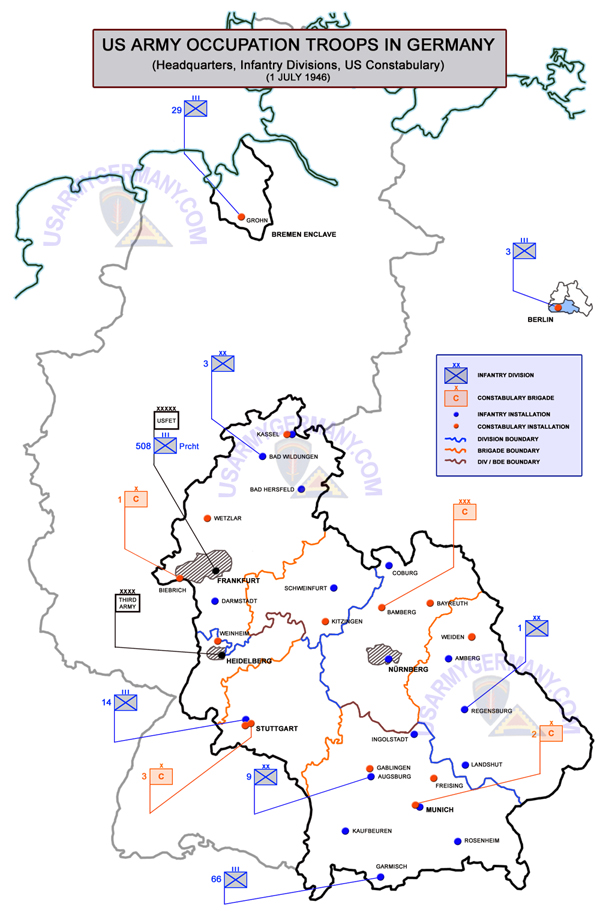 |
||||
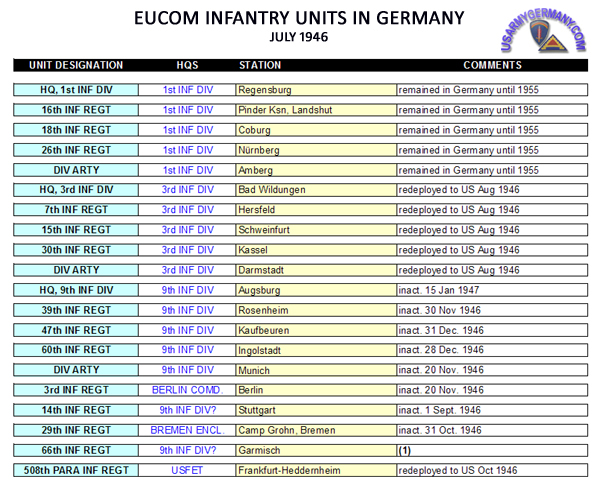 |
||||
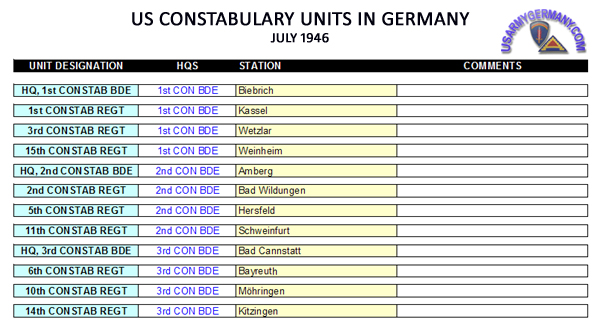 |
||||
(1) I have found some conflicting information on the status (still in Germany or redeployed to ZI) of the 66th Infantry Regiment in July 1946. More research is necessary. |
||||
1947 |
||||
This 13-min film clip shows the conditions in Germany over 2 years after the end of the war - the enormous amount of destruction to cities and industry still starkly evident. This film is part 1 of a 4-part series that was shot during a fact-finding mission of American industrialists in September 1947. (Part 2 - Part 3 - Part 4) |
||||
| U.S. Forces, European Theater | ||||
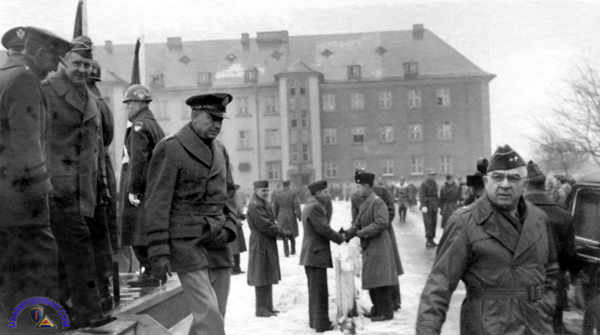 Gen Joseph T. McNarney, CG USFET, steps down from the podium at TUSA headquarters in Heidelberg , Feb 1947 |
||||
| (Source: The Second Year, Vol. I, OCCUPATION FORCES IN EUROPE) | ||||
Theater Organization on 1 July 1946.
Gen. Joseph T. McNarney, who was both the Commanding General, U.S. Forces, European Theater (USFET), and the Military Governor of Germany was the commander of all U.S. forces in the European Theater. His military headquarters were in Frankfurt (I.G. Farben Hochhaus), while most military government functions were centered in the Office of Military Government for Germany (U.S.) (OMGUS), which operated in Berlin under Gen. Lucius D. Clay, the Deputy Military Governor. General and special staff officers were located in Frankfurt. The headquarters subordinate to the Theater Headquarters, which had operated between the Theater Commander and the chiefs of the services, had been eliminated. The field forces in Germany consisted of the Third U.S. Army and the U.S. Air Forces is Europe (USAFE). Western Base Section with headquarters is Paris was reaponsible for the logistical support of all forces outside of Germany and Austria, while Continental Base Section with headquarters in Bad Nauheim, Germany, was responsible for logistical support in the occupied areas (Germany and Austria). The military forces retained responsibility for security and logistics, but OMGUS had assumed most of the functions having to do with German government or economics. This division of functions had been developed to permit the smooth transfer of military government functions from the Army to another governmental agency, should such a move be ordered. |
||||
 Tram Line 39 (a.k.a. ROUNDUP) was a special tram line - here at the main train station (Hauptbahnhof) stop - for US military personnel, 1946 (STARS & STRIPES) |
||||
Strength On 1 July 1946, civilians employed by the U.S. forces is Europe totaled 375,466 of whom 262,730 were enemy or ex-enemy nationals; 60,460 were displaced persons; 42,842 were Allied or neutral nationals, and 9,434 were United States citizens. On 1 January 1947, there were approximately 181,000 troops on duty in the European Theater of whom 143,000 were in the ground forces. In addition there were about 11,504 United States and 17,125 Allied and neutral civilian employees. The number of troops was gradually reduced until the established figure of 117,000 was reached on 1 July 1947. On 30 June 1947, the number of United States civilian employees had dropped to 9,910. The totals in other categories of civilian employees were: Allied and neutral, 6,673; displaced persons, 48,093; enemy or ex-enemy, 213,803. |
||||
| Women's Army Corps (WAC) Detachment, HQ USFET | ||||
(Source: Email from Eugenia Gormley, daughter of a WAC who served originally with the WAC detachment, 12th Army Group and then WAC Det, HQ USFET) |
||||
Mom was a WAC in Frankfurt. She saved a 14 x 18 inch photo of a building in her scrapbook. Thank you big time for letting me identify the I.G. Farben administration bldg (also known as the "Hochhaus"). In return, would you like a scan of it?
I have a few photos from Frankfurt Invaders Football game (again your site helped make that connection). Think fall of 1945. One pic was published in the last issue of Overseas Woman in Jan 1946. Mom with mascot. Documenting and making sense of the memorabilia, fragile bread crumbs, has been fun and frustrating. Have partial copy of MEMETO Vol.1, No.1 newspaper of WAC Detachment, Headquarters Command, USFET, September 29th, 1945 (see above). Wondering if full copy available or if there were any other issues ever printed? Ever heard of? Have partial copy of "Dog Tag" newspaper (?) Friday 5 October 1945. Article about opening of Palmgarden Service Club. Invaders Band played there. Wondering if "Dog Tag" was the name of the publication. Cannot find any info anywhere. Hoping to track down full copy if possible. On 17-Mar-1946, she departed for US. I have a Menu from USAT George Washington, dated 21-Mar-1946. The ship arrived in the US on 26-Mar-1946 and mom eas separated from service on 30-Mar-1946. |
||||
| U.S. Air Forces in Europe | ||||
| (Source: United States Air Forces in Europe Installations, 15 March 1947, in author's collection) | ||||
|
||||
|
|
||||
| Related
Links The US Army in the Occupation of Germany, 1944-1946, by Early F. Ziemke (on-line on the US Army Center at Military History website). An excellent description of the US occupation forces in Germany in the early days after the war in Europe and the struggle to transition from a wartime Army to an Army of Occupation. |
||||

